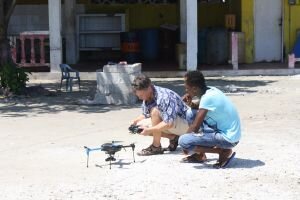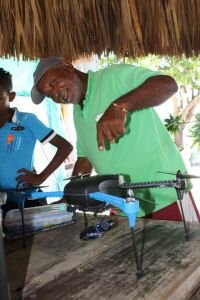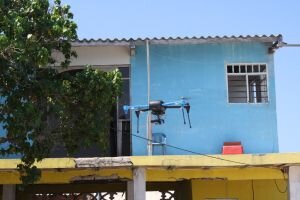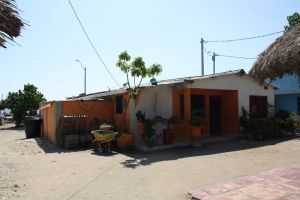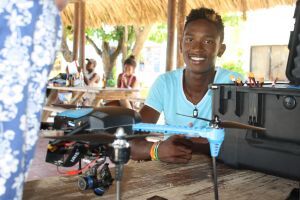
Santa Cruz del Islote
The weekend before Thanksgiving, UM School of Architecture Prof. Adib Cure was working with CCS’s Software Engineering program at Santa Cruz del Islote, off the coast of Cartagena, Colombia, continuing their research on documenting informal cities with drones and digital mapping technologies, as well as interviewing residents of the island known as “the most crowded island on earth.”
While there, Cure was invited to participate on a one-day conference in Bogota, sponsored by Foros Semana, the Colombian Ministry of Housing and others on November 23: “Politica Integral de Vivienda y construccion sostenible: retos y oportunidades” (Comprehensive housing policy and sustainable construction: Challenges and Opportunities). The conference focused on recent efforts of the national government of Colombia to offer more than 100,000 free homes and to invest 4.5 trillion pesos in drinking water projects, balancing that with sustainabilty concerns. Cure was one of the experts who commented on the government program in the second half of the conference. According to the conference website, “Adib Cure stressed the importance that Colombia envisions its cities of tomorrow in an international context, but with local execution, giving priority to the renovation and restoration over demolition.”
Cure also spoke about the work he, Carie Penabad, Chris Mader, and Amin Sarafraz of CCS have done on mapping informal cities, work produced in his Vernacularology studios over the past three years, which includes the study and documentation of vernacular typologies—the various types of buildings in local architectural traditions—and elements of culture that influence them. He also described Cure & Penabad’s most recent built work in Guatemala, which directly engages the topics of sustainability, as well as vernacular and contemporary building traditions.
SOURCE: UM School of Architecture News


